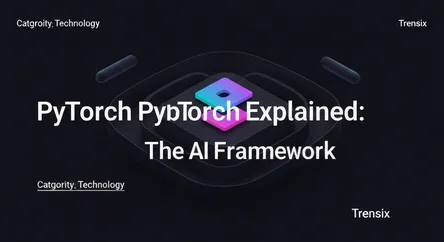Technology
PyTorch Explained: The AI Framework

Discover PyTorch, the open-source machine learning library powering cutting-edge AI. Learn what it is and why it's a favorite for developers.
What is it?
PyTorch is an open-source machine learning library based on Python, widely used for applications such as computer vision and natural language processing. Developed primarily by Meta AI, it is celebrated for its simplicity and flexibility. Unlike some other frameworks, PyTorch uses dynamic computation graphs, which allow for more flexibility during the model-building process. This makes it feel more intuitive and 'Pythonic' to developers, allowing them to modify and debug their networks on the fly. It provides two high-level features: tensor computing with strong GPU acceleration and a deep neural network toolkit.
Why is it trending?
PyTorch's popularity is surging due to its ease of use and strong support within the research community. Its 'define-by-run' approach is highly favored in academia for rapid prototyping and experimentation. This user-friendly nature has led to its adoption by major tech companies and AI labs, including OpenAI for training many of its models. The extensive ecosystem of tools and libraries built on top of PyTorch, such as Hugging Face Transformers, has further cemented its position as a go-to framework for building state-of-the-art AI models.
How does it affect people?
PyTorch is a foundational technology behind many AI-powered services people use daily. It drives the recommendation algorithms on streaming platforms, powers the image recognition in your phone's camera, and enables the natural language understanding in virtual assistants. The rise of generative AI tools for creating text and images is also heavily reliant on frameworks like PyTorch. Essentially, it provides the building blocks that allow developers to create smarter, more efficient, and more personalized digital experiences that are increasingly integrated into our lives.